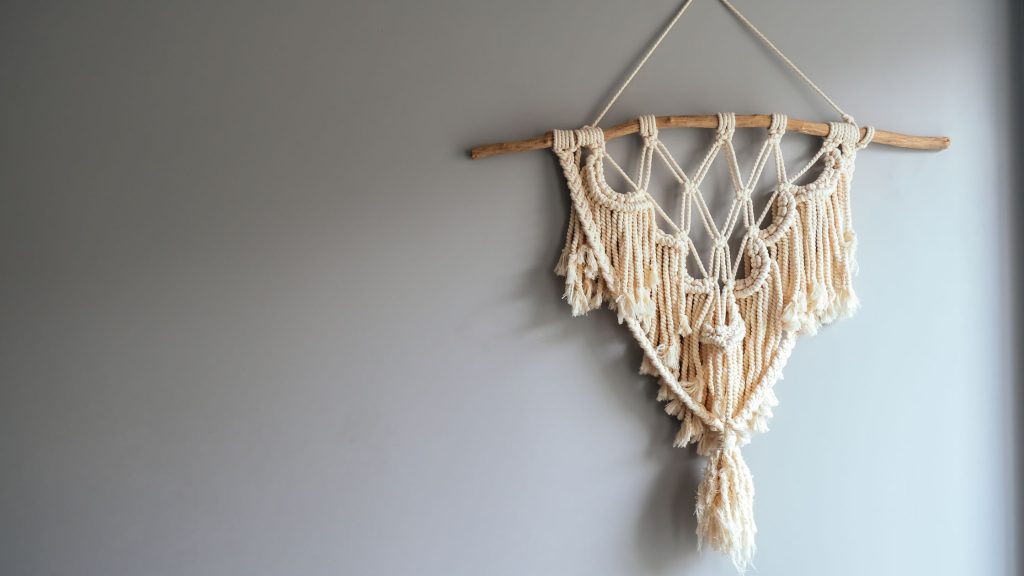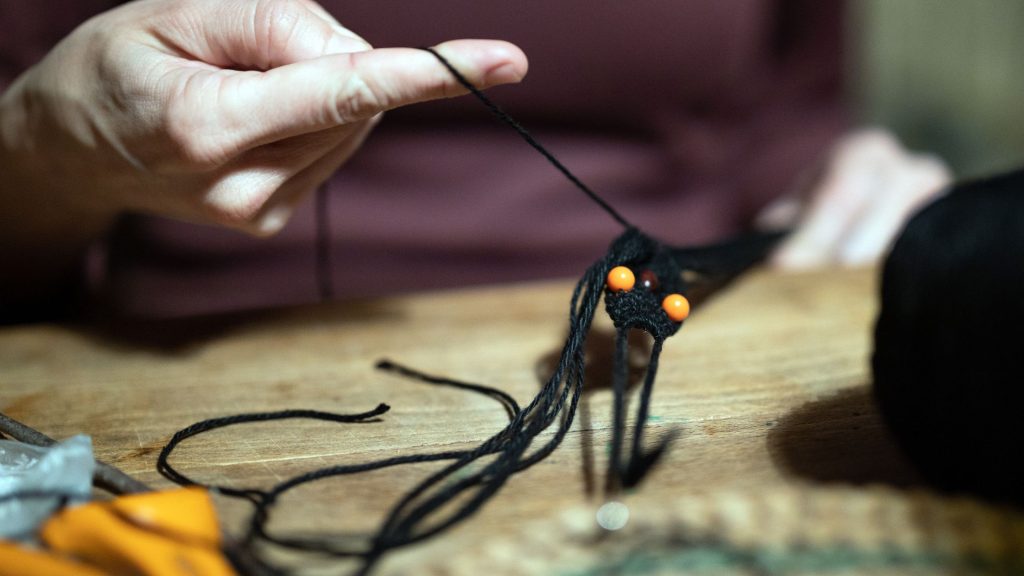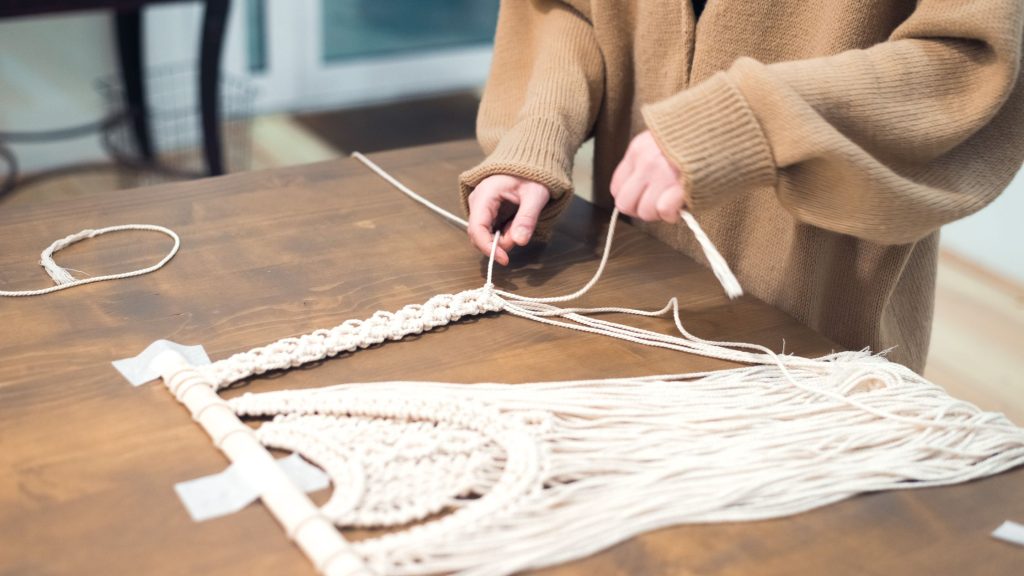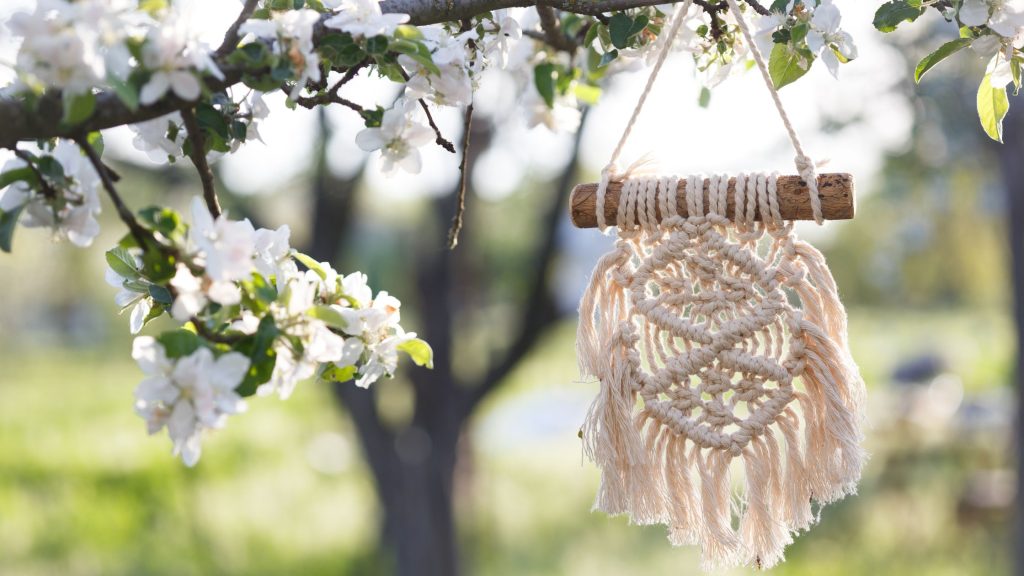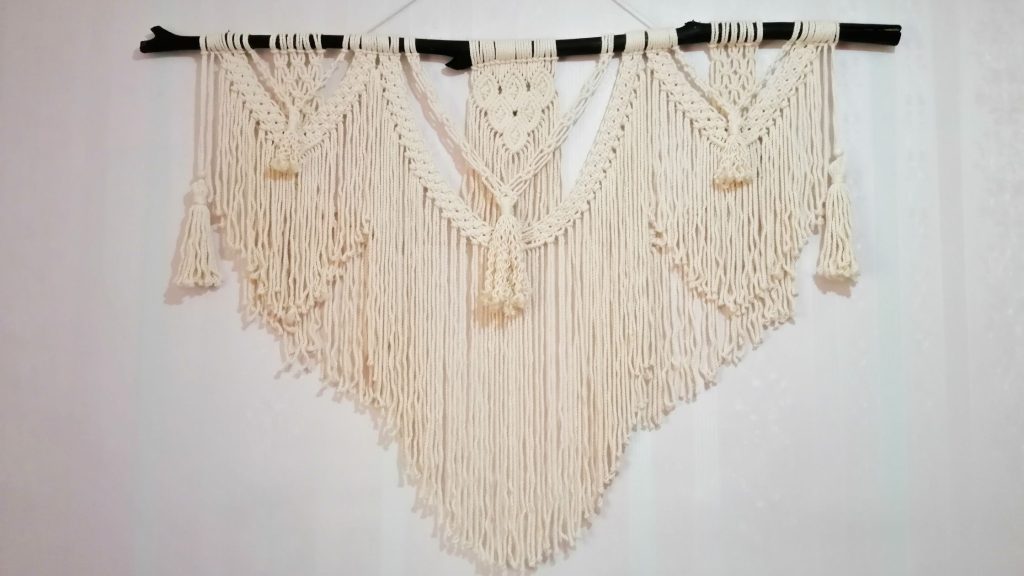Have you ever come across a beautiful macrame pattern, only to realize that it won’t fit the space you have in mind? We’ve all been there. But fret not! In this article, we’ll show you how to adapt macrame patterns to different sizes effortlessly. Whether you’re a beginner or a seasoned macrame artist, these helpful tips will ensure that your creations perfectly suit any space or project. So grab your cords and let’s get started on making macrame magic!
Choosing the Right Macrame Pattern
When it comes to choosing the right macrame pattern, there are a few factors to consider. First, think about the finished size you want for your project. This will help determine which patterns will work best for your needs. Some patterns may be better suited for smaller items like bracelets or anklets, while others are designed for larger projects like wall hangings or room dividers.
Another important factor to consider is the complexity of the pattern. Some patterns may be more intricate and require advanced macrame skills, while others may be more suitable for beginners. Evaluate your own macrame skills and choose a pattern that aligns with your level of expertise. This will ensure that you’re able to successfully complete the project without feeling overwhelmed or frustrated.
Lastly, look for patterns with adjustable elements. This can be especially helpful if you’re unsure about the exact size or design you want. Adjustable patterns allow you to make modifications and customize the final product to your liking. This flexibility makes it easier to adapt the pattern to different sizes and achieve the desired outcome.
Modifying the Pattern’s Length
If you want to modify the length of a macrame pattern, there are a few steps you can follow. First, measure the desired length for your project. This will give you a clear idea of how much you need to adjust the pattern.
Next, calculate the number of cords needed for the new length. Depending on the design, you may need to add or remove cords to achieve the desired length. Adjust the starting length of your cords accordingly.
Once you have the correct starting length, you can extend or shorten the pattern as necessary. This may involve adding or removing sections of the pattern, adjusting the spacing between knots, or modifying the overall structure. Be mindful of maintaining the integrity and balance of the design as you make these adjustments.
Scaling Patterns Up or Down
Scaling patterns up or down in size requires careful consideration of the ratio between the original pattern and the desired size. Understanding this ratio is key to achieving proportional and symmetrical results.
To scale a pattern, start by measuring the original pattern and determining its dimensions. Next, decide on the desired size for your project. With these two measurements in mind, you can adjust the spacing and placement of the knots accordingly.
For example, if you want to scale a pattern up, you may need to increase the distance between knots to accommodate the larger size. Conversely, if you’re scaling a pattern down, you may need to decrease the distance between knots to maintain the integrity of the design. By making these adjustments, you can ensure that the scaled pattern looks balanced and aesthetically pleasing.
Adapting for Different Thickness of Cords
When adapting macrame patterns for different thicknesses of cords, it’s important to consider the cord’s thickness in relation to the original pattern.
Start by considering the thickness of the new cord you’d like to use. This will determine the number of cords needed to achieve the desired size for your project. Calculate the number of cords accordingly.
Once you have the correct number of cords, you may need to adjust the tightness of the knots to accommodate the thicker or thinner cord. Experiment with different tension levels until you achieve the desired look and feel.
Depending on the thickness of the new cord, you may also need to modify the support structure of the pattern. For example, if you’re using a thicker cord, you may need to use a larger dowel or rod for hanging. Similarly, if you’re working with a thinner cord, you may need to use a smaller support structure to ensure stability.
Altering Patterns for Different Designs
If you want to alter a macrame pattern to create a different design, there are a few steps you can take.
First, identify the key elements of the original pattern that you’d like to modify. This could be the type of knots used, the overall shape, or the structural elements of the design.
Next, select alternative knots that will help you achieve the new design. There are countless macrame knots to choose from, so take your time to explore different options and find the ones that work best for your desired outcome.
Once you’ve chosen the alternative knots, you can start modifying the shape or structure of the pattern. This could involve adding or removing sections, adjusting the proportions, or creating new elements.
Lastly, consider adding or removing decorative elements to further enhance the new design. This could include incorporating beads, feathers, or other embellishments that align with your aesthetic preferences.
Creating Multiple Sizes from One Pattern
Creating multiple sizes from one pattern allows you to easily customize your macrame projects to fit a variety of spaces and purposes. Follow these steps to achieve different sizes while maintaining proportions and symmetry.
Start by choosing a base size that will serve as the foundation for all other variations. This could be the original size of the pattern or a size that you prefer as your standard.
Determine the incremental changes you want to make for each size. The key is to maintain consistent intervals between sizes to ensure a cohesive collection.
Maintain proportions and symmetry throughout the adjustment process. This means that if you increase the width, you should also increase the height proportionally to maintain balance. Similarly, if you decrease the length, you should also decrease the width to maintain symmetry.
As you make adjustments for each size, write down the modified instructions. This will help you keep track of the variations and ensure consistent results when creating multiple sizes from the same pattern.
Special Considerations for Wearable Macrame
When adapting macrame patterns for wearable items like jewelry or clothing, there are a few special considerations to keep in mind.
Measurements and sizing are crucial for wearable macrame. Take accurate measurements of the body part where the piece will be worn to ensure a comfortable and well-fitting final product.
When adapting bracelets and anklets, you may need to adjust the length and incorporate closures such as clasps or adjustable knots. This will make it easier to put on and take off the piece, as well as accommodate different wrist or ankle sizes.
For necklaces and chokers, consider the desired length and adjust the pattern accordingly. Additionally, you may need to experiment with different techniques to ensure that the finished piece lays comfortably on the neck and doesn’t cause any irritation.
When adapting macrame patterns for clothing, consider the garment’s shape, size, and desired fit. You may need to modify the pattern to accommodate curves, add darts or pleats for shaping, or adjust the length to suit your preferences.
Adapting Macrame Patterns for Home Decor
Adapting macrame patterns for home decor items allows you to create unique and personalized pieces that complement your space. Consider these tips when adapting patterns for various home decor projects.
For wall hangings, calculate the sizing based on the dimensions of the wall where the piece will be displayed. This will ensure that the finished product fits the space appropriately and doesn’t appear too small or overwhelming.
When adjusting patterns for plant hangers, consider the size and weight of the plant you plan to hang. This will help determine the appropriate thickness of the cords and the design’s overall structure. You may also need to adjust the length to accommodate different plant heights.
Modifying macrame patterns for curtain tiebacks involves considering the weight and thickness of the curtains. Ensure that the tiebacks are strong enough to hold the curtains securely and that the design complements the overall aesthetic of your window treatments.
If you’re interested in creating room dividers, scale the patterns to fit the desired dimensions. You may also need to experiment with different types of knots or structural elements to ensure stability and durability.
Maintaining Proportional Designs
Maintaining proportional designs in macrame requires careful planning and attention to detail. Follow these steps to ensure that your patterns remain balanced and visually appealing.
Use graph paper or digital tools to help map out your design. The grid structure can serve as a guide for maintaining proportions and symmetry throughout the pattern.
Divide the pattern into grids to help with spacing and placement of knots. This will ensure that the design is consistent and that there are no irregularities or inconsistencies.
Follow the ratio for knot placement
This means that the spacing between knots should remain consistent and proportional to the overall size of the pattern. By following this ratio, you can achieve a harmonious and pleasing design.
Make smaller adjustments incrementally
It’s easier to maintain proportional designs by making small changes gradually rather than making large adjustments all at once. This allows you to evaluate the impact of each modification and make any necessary fine-tuning along the way.
Tips and Tricks for Successful Adaptation
Adapting macrame patterns can be a fun and creative process. Here are some tips and tricks to help you successfully modify patterns and achieve the desired results.
Keep a journal of modifications
As you adapt patterns, take notes on what changes you made and how they affected the final outcome. This will serve as a reference for future projects and help you refine your techniques.
Experiment with different materials
Don’t be afraid to branch out and try different types of cord, fibers, or embellishments. Each material can bring a unique texture or element to your project, allowing you to create truly one-of-a-kind pieces.
Consult macrame communities and experts
Online forums, social media groups, and macrame workshops can provide valuable insights and guidance. Reach out to fellow macrame enthusiasts and experts to learn from their experiences and get inspiration for your own adaptations.
Practice on smaller projects first
If you’re new to adapting macrame patterns, start with smaller projects to hone your skills. This will give you the opportunity to experiment, make mistakes, and learn from them without feeling overwhelmed by a large-scale project.
Conclusion
By considering the finished size, complexity, and your own macrame skills, you can choose the right pattern for your needs. Whether you’re modifying the length, scaling patterns up or down, adapting for different cord thickness, altering designs, creating multiple sizes, or considering specific considerations for wearable macrame or home decor, there are techniques and tips to help you achieve the desired outcome. With practice and creativity, you’ll be able to adapt macrame patterns to different sizes and create beautiful, personalized pieces.


